Disclosure: This article contains affiliate links. We may earn a commission from purchases at no extra cost to you, which helps our travel content.
The first time I set foot in Lebanon, I was struck by the juxtaposition of ancient and modern – 7,000-year-old Byblos stone structures standing resilient against the Mediterranean while Beirut's cosmopolitan energy pulses just 40 kilometers south. As someone who's spent years navigating emergency situations, I've developed a sixth sense for efficient movement and safe passage. Lebanon tested those skills in the most beautiful way. The journey between these two iconic Lebanese destinations offers not just transportation options but a thread connecting vastly different worlds within one small, magnificent country. Whether you're drawn to Byblos' ancient harbor and Crusader castle or Beirut's phoenix-like resilience and vibrant food scene, understanding how to move between them is essential. This guide weaves together my week-long experience navigating Lebanon's transportation network with practical advice for fellow solo travelers seeking both efficiency and cultural immersion.
The Service Taxi Experience: Lebanon's Shared Ride Culture
Nothing epitomizes Lebanese transportation quite like the 'service' (pronounced ser-vees) taxi system – a cultural institution as much as a mode of transport. These shared taxis, typically older Mercedes sedans with distinctive red license plates, operate on semi-fixed routes and represent Lebanon's communal approach to daily life.
My first service taxi experience from Byblos to Beirut began at the main taxi stand near Byblos's souk. The driver, Abu Charbel, had the weathered face of someone who'd navigated these coastal roads for decades. I quickly learned the protocol: state your destination ('Beirut, Hamra'), negotiate the fare (about 8,000 LBP per person when I visited, though prices fluctuate with Lebanon's economic situation), and wait until the car fills with fellow passengers.
What makes service taxis unique is their organic flexibility. While following general routes, drivers often accommodate small detours for passengers. The unspoken etiquette fascinates me – locals communicate their stops through a series of hand gestures and landmark references rather than street addresses. As an EMT, I appreciate systems that adapt to human needs rather than forcing humans to adapt to rigid systems.
The coastal highway journey offers spectacular Mediterranean views on one side and Lebanon's dramatic mountains on the other. Unlike the isolation of private transportation, service taxis provide an immersion into Lebanese daily life – conversations flow naturally, political debates erupt and subside, and music from Lebanese pop to classic Fairuz fills the air. I've had some of my most authentic cultural exchanges in these shared rides, including an impromptu lesson on using za'atar as both culinary spice and traditional remedy for respiratory issues – knowledge that resonated with both my EMT training and indigenous understanding of plant medicine.

💡 Pro Tips
- Have small bills ready as drivers rarely provide change for large notes
- Learn basic Arabic phrases for directions – 'straight ahead' (dughri), 'stop here' (waef hon), and 'turn right/left' (yameen/yasaar)
- Service taxis can be hailed anywhere along their route – just wave and call out your destination
Bus Routes: The Budget-Friendly Backbone
Lebanon's bus system offers the most economical option for traveling between Byblos and Beirut, though it requires a bit more patience and flexibility than other methods. The primary bus companies operating this route are OCFTC (Office des Chemins de Fer et des Transports en Commun) and Lebanon Bus, with several private operators running minibuses and coaches alongside them.
The main bus station in Byblos is located near the entrance to the old souk. Buses to Beirut generally run every 15-30 minutes from around 6 AM until 8 PM, though schedules are more suggestive than definitive. The journey costs approximately 3,000-5,000 LBP (prices fluctuate with Lebanon's economic situation), making it significantly cheaper than any taxi option.
During my second day exploring, I decided to take the bus to experience this more local form of transportation. The vintage coach that arrived had clearly seen decades of service, but the interior was surprisingly well-maintained. What these buses lack in modern amenities, they make up for in character. The driver, noticing my travel backpack (which has accompanied me from Canadian wilderness rescues to Lebanese coastal highways), immediately identified me as a traveler and made a point to announce my stop in Beirut.
The bus follows the coastal highway (officially Route 1), making frequent stops in towns like Jounieh along the way. This slower pace offers a more detailed view of Lebanese coastal life – fishermen mending nets, roadside fruit vendors, and families gathering at beach clubs. The journey takes approximately 60-90 minutes depending on traffic and stops.
One aspect of bus travel I particularly appreciated was the camaraderie among passengers. When an elderly woman boarded with heavy shopping bags, three people immediately offered their seats. This sense of community care reminded me of indigenous values I grew up with – the understanding that we move through the world as a collective, not just as individuals.

💡 Pro Tips
- Buses don't follow strict timetables – arrive at the station with flexibility in your schedule
- Keep your destination written in both English and Arabic to show the driver
- Store valuables in a secure money belt as buses can get crowded
Private Taxis: Convenience at a Premium
When time efficiency matters more than budget constraints, private taxis offer the most direct route between Byblos and Beirut. Unlike service taxis, these vehicles (identifiable by their non-red license plates) are hired exclusively for your journey, allowing for door-to-door service without additional passengers.
After a particularly exhausting day exploring Byblos's Crusader castle – where I'd spent hours connecting the site's sacred geometry to similar patterns I'd observed in indigenous structures across North America – I opted for the comfort of a private taxi back to Beirut. My hotel in Byblos arranged the service, though taxis can also be hailed through ride-hailing apps like Uber and Careem, which have gained popularity in Lebanon's urban areas.
Private taxis typically charge between 80,000-150,000 LBP for the Byblos-Beirut route, with prices varying based on time of day, your negotiation skills, and the current economic situation. While significantly more expensive than shared options, they offer unmatched convenience and the ability to stop at points of interest along the way.
My driver, Nabil, suggested a brief detour to the stunning grotto at Jeita – a detour that would have been impossible with other transportation methods. We also stopped at a roadside stand where I purchased fresh pomegranates and learned about their traditional use as both food and medicine. As someone who studies the intersection of traditional and modern healing practices, these impromptu cultural exchanges are invaluable.
For solo female travelers, private taxis offer an additional layer of security, particularly for late-night travel. I recommend photographing the license plate before entering and sharing your live location with someone you trust using a reliable portable charger to ensure your phone stays powered throughout the journey. This practice comes from my EMT training – situational awareness can prevent emergencies before they occur.
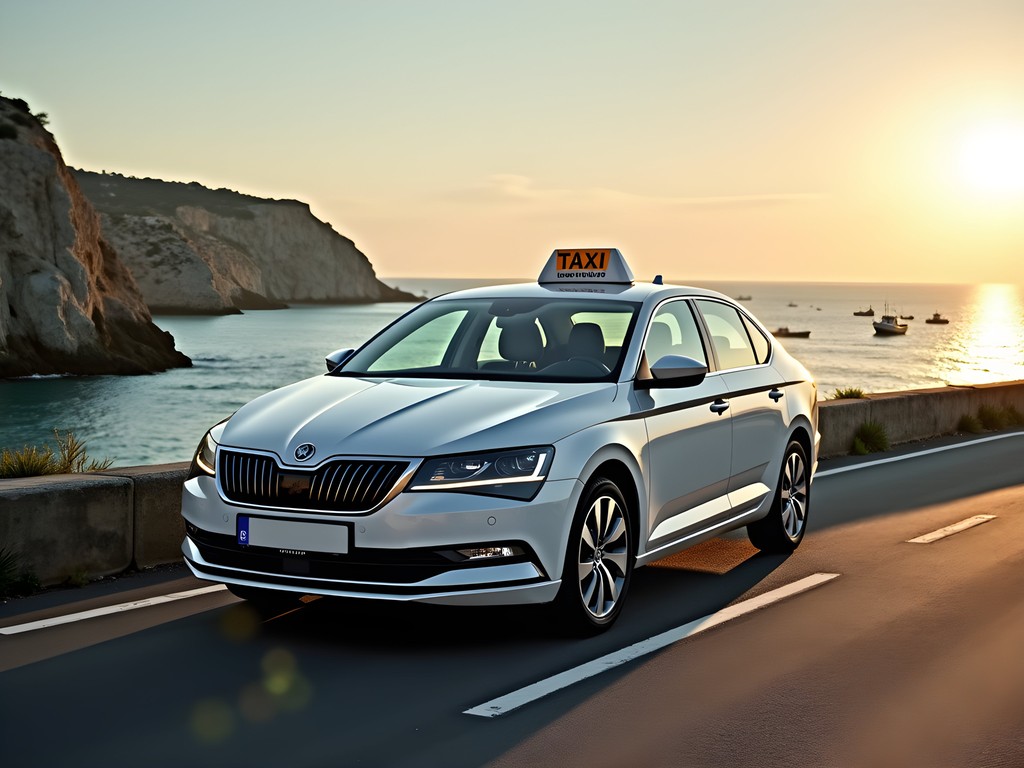
💡 Pro Tips
- Always negotiate the fare before entering the taxi, as meters are rarely used
- Ask your hotel to arrange a trusted driver for the best rates and service
- For added security, use ride-hailing apps which track your journey electronically
Ride-Sharing and Modern Alternatives
Lebanon's transportation landscape is evolving, with modern ride-sharing platforms gaining traction alongside traditional options. Uber and Careem both operate in Beirut and have expanded their services to include Byblos, offering a hybrid between private taxis' convenience and more standardized pricing.
During my visit, I experimented with Careem for an early morning journey to catch sunrise at Beirut's famous Pigeon Rocks after spending the previous day in Byblos. The app's GPS tracking and upfront pricing provided peace of mind, while the ability to select vehicle type offered flexibility based on my needs and budget.
The ride-sharing experience in Lebanon differs somewhat from Western countries – drivers often call to confirm pickup locations rather than relying solely on GPS, and some prefer cash payments despite the app's electronic payment options. Having a local SIM card with data makes this process much smoother, which is why I always travel with an international travel adapter that allows me to keep multiple devices charged regardless of the outlet type.
Beyond traditional ride-sharing, innovative transportation solutions are emerging in response to Lebanon's economic challenges. Local Facebook groups coordinate carpooling between cities, and some enterprising individuals have created informal shuttle services catering specifically to tourists traveling between popular destinations.
One particularly interesting option I discovered was a weekend vintage car service where enthusiasts of classic Lebanese vehicles offer rides between Byblos and Beirut in restored 1960s cars, creating both transportation and a mobile cultural experience. As someone fascinated by the intersection of tradition and modernity, these adaptive solutions reflect the remarkable resilience I've observed throughout Lebanon – a quality that resonates deeply with indigenous perspectives on adaptation and survival.
While these alternative options require more research and often advance booking, they can provide unique experiences that become highlights of your journey rather than merely transitions between destinations.
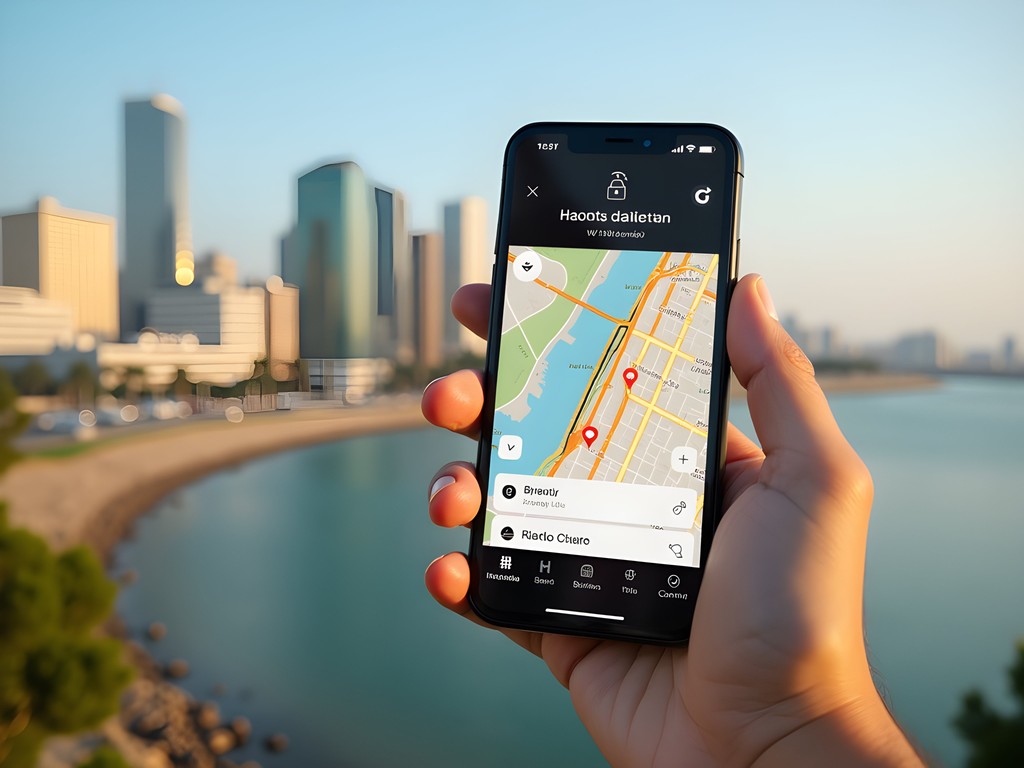
💡 Pro Tips
- Download ride-sharing apps before your trip and set up payment methods
- Consider joining Lebanon travel Facebook groups to find carpooling opportunities
- Have a backup transportation plan as network connectivity can be unreliable in some areas
Navigating Transportation Challenges: Language, Currency and Safety
Lebanon's transportation system, while functional and diverse, comes with unique challenges that require adaptation and awareness. Understanding these challenges in advance can transform potential frustrations into manageable situations.
The language barrier presents the most immediate challenge for many travelers. While English is widely spoken in tourist areas and by younger Lebanese, many drivers – particularly of service taxis and buses – speak primarily Arabic or French. I found having a pocket phrasebook invaluable for transportation-specific terms. Additionally, I kept a note in my phone with common destinations written in Arabic script that I could simply show to drivers.
Lebanon's ongoing economic situation has created a complex currency environment that directly impacts transportation costs. The official Lebanese pound (LBP) rate differs dramatically from the black market rate, and prices can change weekly. During my visit, I found it essential to carry small denominations of Lebanese pounds for transportation, as most drivers don't accept foreign currency or credit cards. Ask your accommodation for current rate guidance before negotiating fares.
Safety considerations for transportation in Lebanon are similar to many Mediterranean countries. Service taxis are generally safe but exercise standard precautions – avoid sharing with only one other male passenger if you're a solo female traveler, trust your instincts if a driver seems unsafe, and always track your route on maps. As an EMT, I've developed a heightened awareness of safety conditions – I recommend sitting behind the driver in taxis when possible and keeping valuables secure in a neck wallet rather than visible pockets.
Traffic in Lebanon, particularly approaching Beirut, can be chaotic by Western standards. Lane markings are often treated as suggestions, and the driving style tends to be assertive. During rush hours (7-9 AM and 4-7 PM), journey times between Byblos and Beirut can double. Plan accordingly and embrace what my Mi'kmaq grandmother would call 'flexible time' – the understanding that journeys unfold at their own pace, regardless of our schedules.

💡 Pro Tips
- Save your hotel address in Arabic to show drivers
- Carry small denominations of Lebanese pounds specifically for transportation
- During heavy traffic times, consider the coastal road rather than the highway for more scenic (though sometimes slower) alternatives
Final Thoughts
The journey between Byblos and Beirut represents more than mere distance traveled – it's a thread connecting Lebanon's ancient past to its resilient present. Each transportation option offers a different perspective: service taxis provide cultural immersion, buses offer economic value and local connection, private taxis deliver convenience and customization, while modern alternatives bridge traditional and contemporary experiences. As you navigate between these iconic Lebanese destinations, remember that the journey itself holds as much potential for discovery as the places you're traveling between. The Lebanese transportation system, with all its idiosyncrasies and adaptations, reflects the country itself – resourceful, communal, and surprisingly functional despite challenges. Whether you're drawn to Lebanon for its ancient wonders, culinary delights, or the remarkable resilience of its people, understanding how to move between its treasures enhances every aspect of your experience. Safe travels – or as they say in Lebanon, bi'amān Allah.
✨ Key Takeaways
- Service taxis offer the best balance of cost, convenience and cultural immersion for most travelers
- Always carry small denominations of Lebanese currency for transportation
- Build flexibility into your schedule as traffic and informal timetables can cause delays
- Learning basic Arabic transportation phrases significantly improves your experience
📋 Practical Information
Best Time to Visit
year-round (spring and fall offer most pleasant temperatures)
Budget Estimate
$30-50 USD per day for transportation
Recommended Duration
3-4 days minimum to experience both destinations
Difficulty Level
Moderate

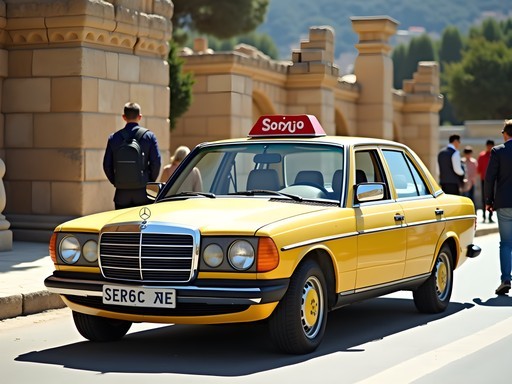

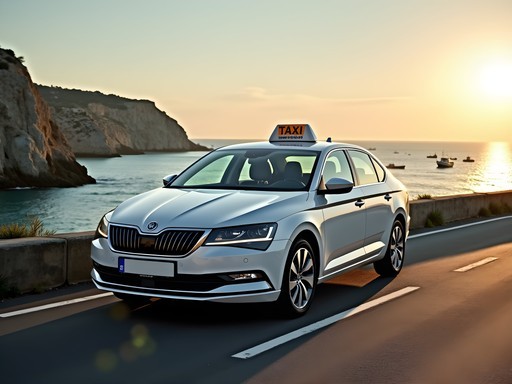
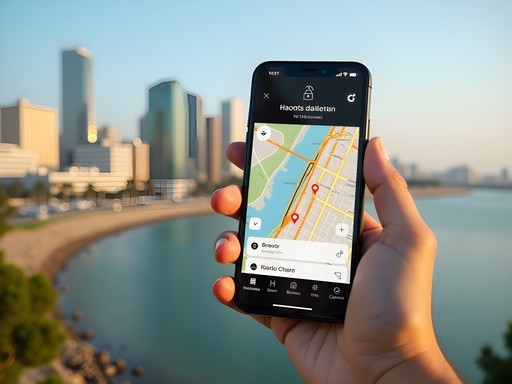











Comments
backpacknomad
The service taxi culture in Lebanon is one of my favorite things about traveling there! Such a unique way to get around and meet locals. Pro tip: learn a few basic Arabic phrases - the drivers LOVE when tourists make an effort and you'll get better treatment. My go-to phrase was 'shukran kteer' (thank you very much) and it always got smiles!
sunsetmaster
Any other useful phrases you'd recommend learning?
backpacknomad
'Kam el-se3er?' (How much does it cost?) is super useful for taxis, and 'Wayn...' (Where is...) followed by your destination. Most Lebanese in tourist areas speak some English or French though!
summerexplorer
Great post! I'd add that if you're staying in Byblos, ask your hotel to help arrange transportation to Beirut. Our hotel owner called his cousin who was a service taxi driver and gave us a slight discount. Also, don't miss stopping at Jeita Grotto if you can - it's along the way and absolutely breathtaking. We asked our driver to make a 2-hour stop there and it was one of the highlights of our trip.
Gregory Boyd
Solid breakdown of the transport options, Sage. After 20+ years of backpacking through the Middle East, I've found Lebanon's service taxi system to be one of the most efficient informal transit networks around. A few practical notes for budget travelers: 1. The front seat in service taxis costs extra (usually 1.5x the regular fare) but gives you better views and more legroom. 2. If you're heading to Byblos from Beirut, the vehicles depart from under the bridge near Cola intersection, not the official station many maps show. 3. Learn the Arabic numbers 1-10 written down - helps tremendously when negotiating fares. Also worth noting that service taxis are becoming less common as fuel prices rise, so don't be surprised if you end up waiting a bit longer than this article suggests during off-peak hours.
cityblogger
Thanks for the tip about Cola intersection! That's super helpful, would have totally gone to the wrong place!
George Hayes
Just got back from Lebanon with my family and this guide would have been so helpful! We ended up using a mix of transportation options. The bus was great value but confusing to figure out the first time. For families, I'd recommend downloading the offline map of Lebanon on Google Maps before going - saved us when trying to figure out where to get off the bus. One thing to note that wasn't mentioned: if you're traveling with kids between Byblos and Beirut, the private taxi is worth the extra cost. We fit our family of four plus luggage comfortably, and our driver Ahmad even acted as an impromptu tour guide, stopping at a beautiful viewpoint along the way. Cost us $25 but the convenience was worth every penny with tired children!
bluechamp
Just got back from Lebanon and used this guide extensively! The service taxis were exactly as described - a bit chaotic but so authentic. One tip I'd add: have small bills ready as drivers rarely have change. Also, I found using the Lebanon Offline Map super helpful since I could track our route without using data. The ride along the coast was breathtaking, though traffic getting into Beirut was pretty intense in the afternoon. Thanks for this guide, it made navigating so much easier!
reddiver
Great post! How reliable is the bus schedule? And do they run late at night if we want to have dinner in Beirut but stay in Byblos?
Gregory Boyd
Not the author, but I was there in September. The buses technically have schedules but they're more guidelines than rules. Last ones from Beirut to Byblos leave around 8pm, so dinner in Beirut gets tricky unless you're eating early. Service taxis run later though!
reddiver
Thanks for the info! Might have to adjust our plans a bit then.
cityblogger
Those photos of the coastline drive are STUNNING!!! 😍 Making me want to book a ticket right now!
Casey Andersson
Sage, this brings back memories! I did this exact journey last year but splurged on a private taxi since I was carrying way too much luggage (typical me, I know). The driver was this fascinating gentleman named Fouad who gave me an impromptu history lesson the entire way. He insisted we stop at this little roadside bakery for manakish that I still dream about! While the private taxi was pricier, it gave me flexibility to stop at that gorgeous viewpoint just before you descend into Beirut. For anyone going, I'd recommend bringing a light scarf - it can get windy along the coastal route, especially if you want photos at the lookout points!
bluechamp
Did you feel safe the whole time? I'm traveling solo next month and trying to decide between service taxi or private.
Casey Andersson
Absolutely! I felt completely safe. If you're solo, the service taxis are actually great for meeting locals, but if you want more flexibility for photo stops, private might be worth it. Just use the official taxi services rather than random offers.
travelway
Great guide! Those service taxis sound like such a fun way to see the real Lebanon.
adventurestar
Love this guide! The photos are stunning too 😍
Venture X
Premium card with 2X miles, $300 travel credit, Priority Pass